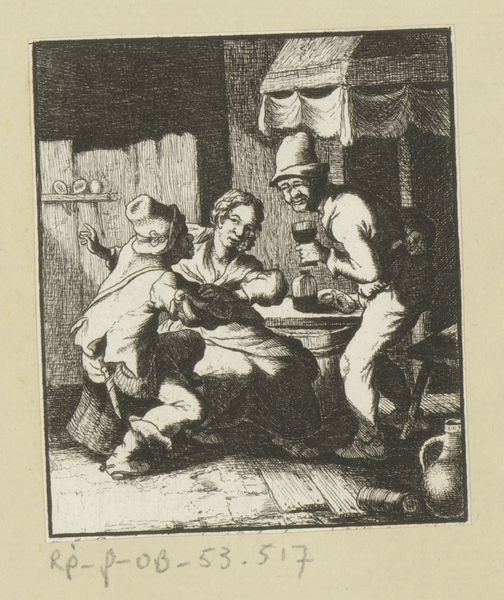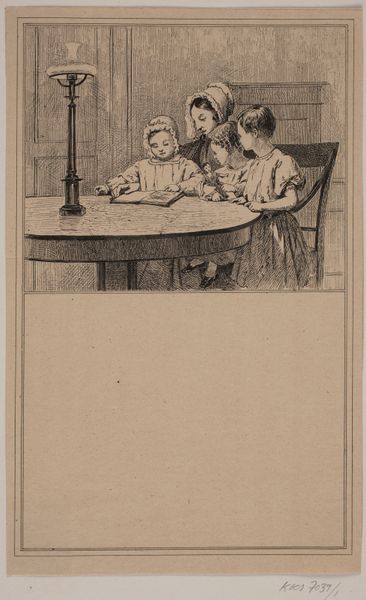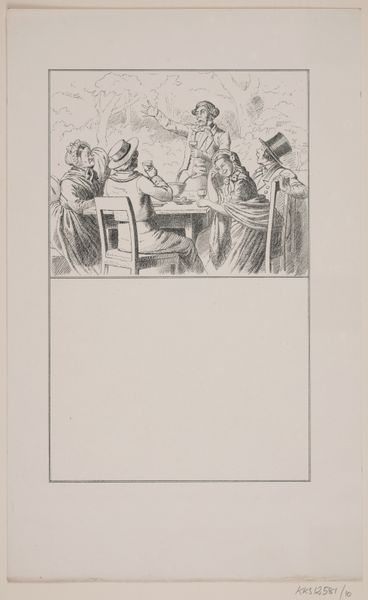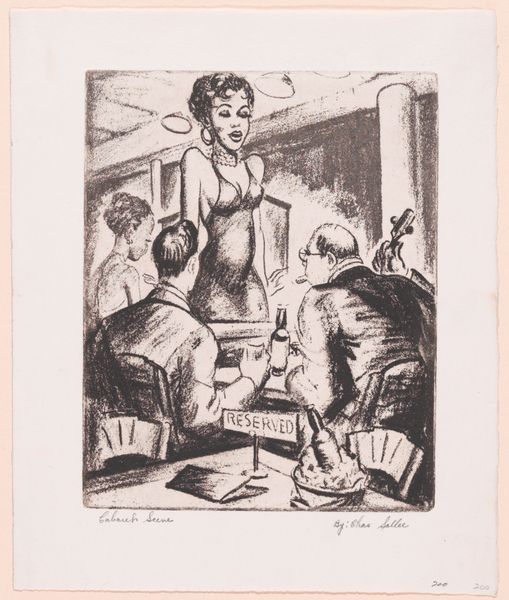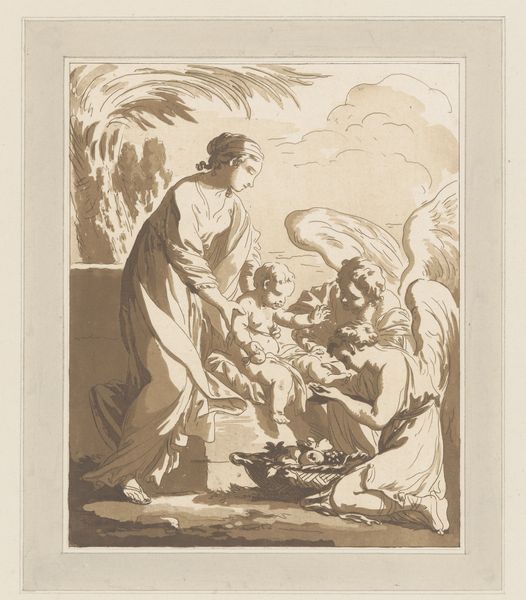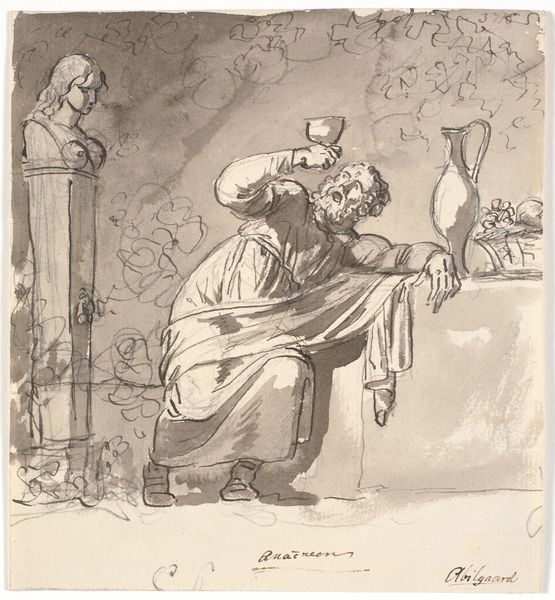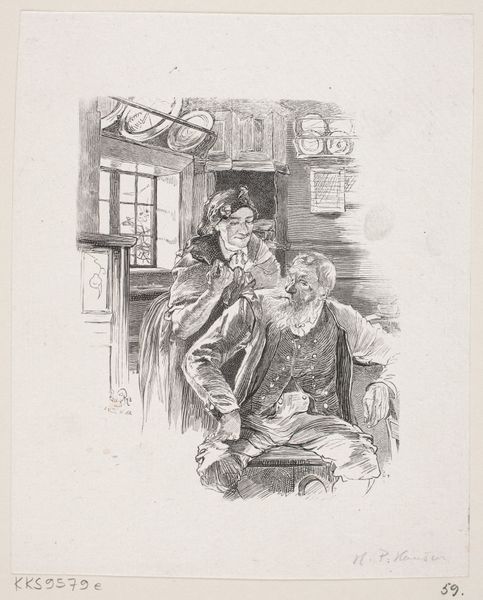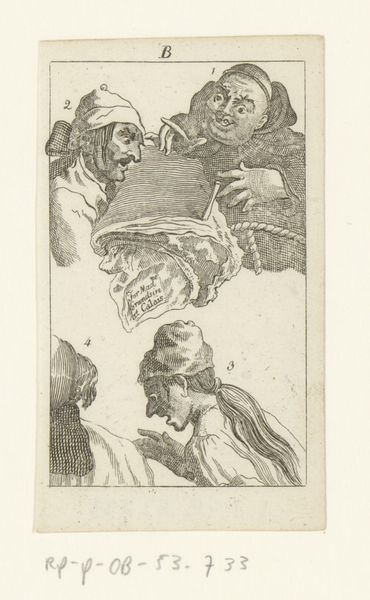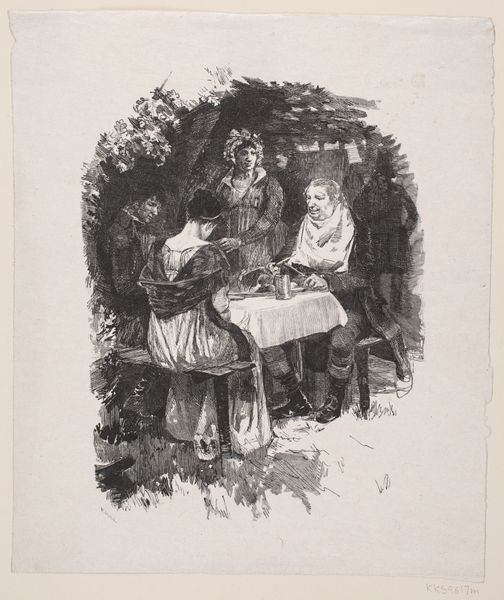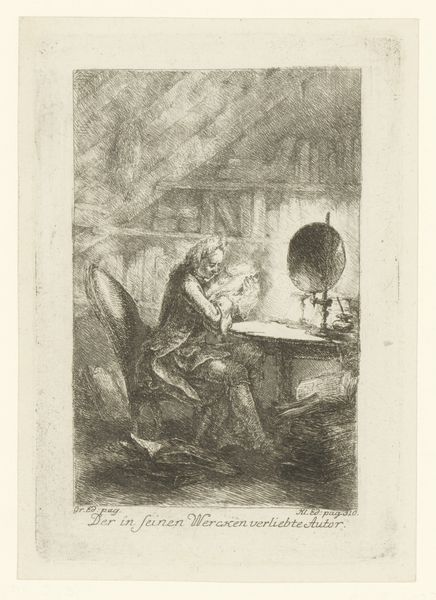
Copy of Le Benedicite, estampe appelée aussi La Sainte Famille a Table et St. Joseph Faisant Boire L'Enfant Jésus (The Grace, also called The Holy Family at the Table and St. Joseph Giving the Christ Child a Drink) 1610 - 1700
0:00
0:00
drawing, print, etching, ink
#
drawing
#
baroque
# print
#
etching
#
ink
#
history-painting
Dimensions: Sheet: 7 9/16 x 6 1/2 in. (19.2 x 16.5 cm)
Copyright: Public Domain
Editor: This etching, "Copy of Le Benedicite…," attributed to an anonymous artist between 1610 and 1700, portrays the Holy Family at mealtime. I’m struck by the intimate yet formal setting, enclosed within that circular frame. What historical factors do you feel might shed some light on this work's social role and meaning? Curator: That's a great observation. This print’s depiction of the Holy Family echoes Counter-Reformation ideals, specifically reinforcing familial piety against the backdrop of rising Protestantism. The act of blessing food highlights domestic spirituality, making the home a sacred space. The print’s likely widespread circulation suggests it aimed to model proper Catholic behaviour for ordinary families. What message do you think this work conveys about the Church? Editor: It seems like the print encourages personal faith and devotion rather than focusing on grand church settings, therefore bolstering its relevance within individual households. How does the medium, printmaking, factor into this religious and social message? Curator: Exactly. Printmaking allowed for mass production and dissemination of religious imagery. Cheaper than paintings, prints made religious instruction affordable and accessible. These images helped standardize religious practice across different social strata, turning private devotion into a collective identity marker. Can you see how this accessible format serves a larger agenda of social cohesion and ideological alignment? Editor: I can see that now. This wasn't just a picture, but a tool for social engineering through accessible art. Considering its likely wide distribution and emphasis on personal religious experience within family, it almost seems like an early form of propaganda, but used to reinforce beliefs rather than influence political view as they do today. Curator: A very insightful interpretation. By analyzing such art we get a peek into the cultural and religious landscape of the past, revealing that artworks weren’t just pretty, they were socially active agents of belief and change. Editor: Indeed! Thinking about this image in terms of its social and historical influence, rather than just aesthetics, has totally shifted my perception. Curator: Likewise. Thinking about it together gives a fresh perspective, and highlights why understanding social context is key in our field.
Comments
No comments
Be the first to comment and join the conversation on the ultimate creative platform.

